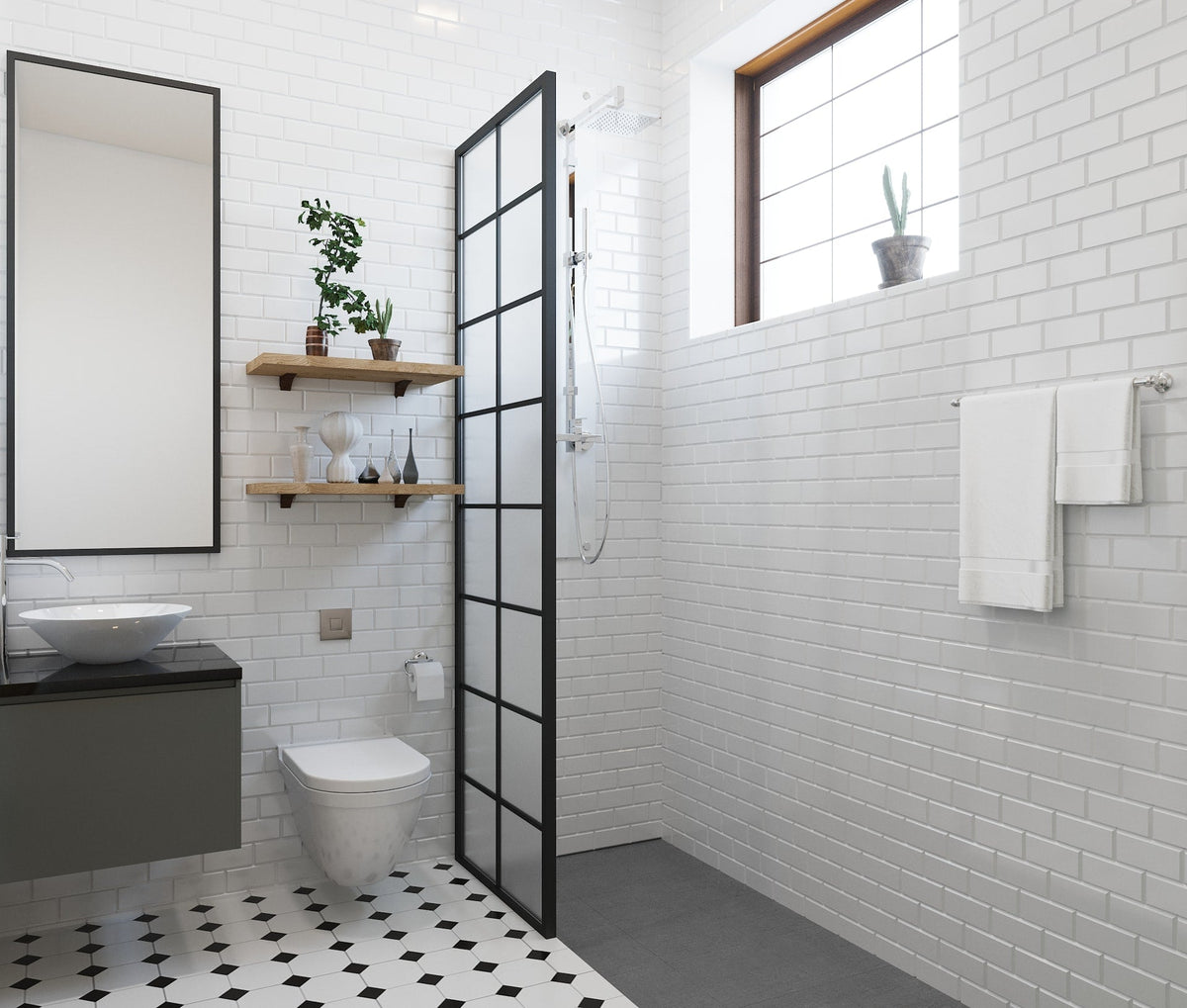 FREE UK DELIVERY.
EXPRESS OPTIONS AVAILABLE
FREE UK DELIVERY.
EXPRESS OPTIONS AVAILABLE

Why Is My Electric Shower Cold? 5 Simple Steps to Keep Hot Water Flowing
|
|
Time to read 7 min
 FREE UK DELIVERY.
EXPRESS OPTIONS AVAILABLE
FREE UK DELIVERY.
EXPRESS OPTIONS AVAILABLE
 UP TO 10 YEARS GUARANTEE
FOR PEACE OF MIND
UP TO 10 YEARS GUARANTEE
FOR PEACE OF MIND
 30 DAY RETURNS
NO QUIBBLE GUARANTEE
30 DAY RETURNS
NO QUIBBLE GUARANTEE
|
|
Time to read 7 min
Table of Contents
Few things compare to the dread of being greeted with a frigid shower.
If you’re having trouble getting hot water from your electric shower and asking yourself "why is my electric shower cold", don’t worry. You can take some simple steps to troubleshoot the issue and restore your hot water flow.
Get your hot water running smoothly with these easy-to-follow tips.
A malfunctioning thermostat can prevent the water from heating properly, leading to a cold shower.
Limescale buildup in the shower head can restrict water flow, causing the shower to run cold due to reduced pressure.
The most common cause of an electric shower running cold is an electrical supply fault or wiring problem. It’s important to check the wiring in your bathroom and ensure that all connections are secure. You should also inspect the shower unit itself for any signs of damage or wear and tear. If you notice anything suspicious, it’s best to call a qualified electrician for help.
Another possible issue could be a faulty thermostat. Your thermostat regulates the temperature of your hot and cold water, so if it isn't working properly, you won't get the right temperature from your shower.
ProTip: To test if this is the cause, turn up the thermostat until it clicks off and then back on again – if nothing happens, then it’s likely that the thermostat is to blame.
Finally, if none of these issues seem to be the problem, it could be a simple case of low water pressure. Low water pressure can cause your hot water flow to become weak or non-existent. To check if this is the issue, you should inspect your shower head and make sure there are no blockages or obstructions.
You might also want to try changing out the shower head for a new one – this could help increase the water pressure and restore your hot water flow.
The most common cause of an electric shower running cold is an electrical supply fault or wiring problem. It’s important to check the wiring in your bathroom and ensure that all connections are secure. You should also inspect the shower unit itself for any signs of damage or wear and tear. If you notice anything suspicious, it’s best to call a qualified electrician for help.
Another possible issue could be a faulty thermostat. Your thermostat regulates the temperature of your hot and cold water, so if it isn't working properly, you won't get the right temperature from your shower.
ProTip: To test if this is the cause, turn up the thermostat until it clicks off and then back on again – if nothing happens, then it’s likely that the thermostat is to blame.
Finally, if none of these issues seem to be the problem, it could be a simple case of low water pressure. Low water pressure can cause your hot water flow to become weak or non-existent. To check if this is the issue, you should inspect your shower head and make sure there are no blockages or obstructions.
You might also want to try changing out the shower head for a new one – this could help increase the water pressure and restore your hot water flow.
If you're still having trouble getting hot water from your electric shower, here are some tips on how to troubleshoot the issue:
The first step in troubleshooting a cold electric shower is to check the temperature setting on the shower unit. Most electric showers have a temperature dial that allows you to adjust how hot or cold you want the water to be. It's possible that someone may have accidentally changed the settings, so make sure that it is set correctly before moving on.
If the temperature setting appears to be correct, then the next step is to clean or replace your thermostat sensor. This component measures and monitors the temperature of your shower water and sends a signal to the heater when it needs to heat up more water. If the sensor is dirty or not functioning properly, it could be preventing your shower from producing hot water. Cleaning or replacing it should solve this issue quickly and easily.
If cleaning or replacing your thermostat sensor doesn't do the trick, then it's time to move on to replacing your heating element. This component heats up cold water as it enters your electric shower, so if it's malfunctioning then you won't be able to get hot water out of your shower head.
Fortunately, replacing a heating element isn't too difficult—it just takes a bit of technical know-how and patience! Just make sure that you turn off all power sources before attempting any repairs and if you are unsure at all then it is safest to contact a professional to do this.
Another common cause of cold electric showers is leaks in either the pipes or fixtures connecting to your shower head. If there are any leaks, they should be repaired immediately as they can cause serious damage if left unchecked.
To check for leaks, turn off your main water supply and inspect all of the pipes leading up to your shower head - look for any signs of wear and tear such as cracks or corrosion which could be causing leaks in your system.
Additionally, inspect all of the fittings around joints and elbows where two pipes connect – any loose fittings should also be tightened up. Once you’ve checked everything over, turn on your main water supply again and test out your shower - chances are it will now be functioning correctly.
If all else fails, then it’s time to call an experienced plumber who will be able to identify and repair any issues with your plumbing system that might be causing your cold electric showers. An experienced plumber will be able to assess the situation quickly and accurately and provide you with an effective solution so that you can have hot water once again!
If you've troubleshooted the above options and still face problems it could be due to low water pressure. It is typically recommended by Plumbers to replace a shower head, here are some options to choose from:
Troubleshooting a cold electric shower doesn’t have to be difficult. With just a few simple steps you can quickly identify and fix any issues causing hot water flow problems in no time at all - allowing you to enjoy hot showers once again.
No matter what kind of problems you're having with your plumbing system, always make sure to stay safe by consulting an expert who can diagnose and solve the problem quickly and safely and prevent further damage down the road.
Your electric shower will require regular maintenance in order to keep it running efficiently. You should check all wiring connections periodically and inspect both water filters for any blockages. It is also important to descale your shower head and clean your shower hose regularly to prevent limescale build up that could lead to a blocked shower head or shower hose. Depending on the usage and water quality in your area, it is recommended to perform basic maintenance checks every 6-12 months.
The choice between a thermostatic shower and an electric shower will depend on your individual needs and preferences.
Thermostatic showers offer greater control over temperature as they have built-in regulators, maintaining temperature consistency, even if there are sudden changes in pressure or flow.
On the other hand, electric showers have no regulation, so the temperature can fluctuate with changes in the water supply. Ultimately, it is up to you to decide which type of shower suits you best. Check out our helpful Shower Buying Guide for more information.
Using an electric shower can be quite energy intensive so it is important to take measures to reduce your usage where possible. To start, try setting the water temperature to one that is comfortable but not too hot.
Also, take shorter showers and avoid running the water for longer than necessary. Additionally, investing in an energy efficient electric shower can help reduce your impact on the environment and save you money in the long run.
Finally, always make sure to read any instructions from the manufacturer carefully before use and regularly inspect both water filters for any blockages as this could prevent your electric shower from reaching its full potential. Following these simple steps should help keep your electric shower running efficiently and safely.


